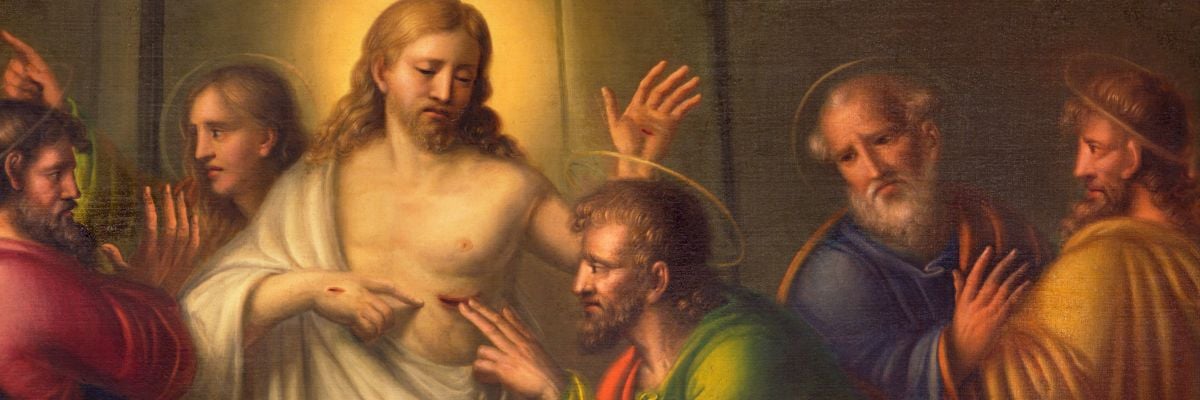
Although you have not seen him you love him.
-1 Peter 1:8
Like newborn infants, you must long for the pure, spiritual milk, that in him you may grow to salvation.
-Entrance Antiphon for Divine Mercy Sunday
Seeing and hearing are our highest sense powers; they allow us to know the world around us the most completely. Touch is the lowest but the most fundamental sense power, because all the other senses begin with it in some way. Taste and smell are right above touch—smell being higher than taste since it can work even at a distance.
Our Lord Jesus earnestly desires that we believe in him, that we know him. We say that “seeing is believing,” but he says, no, “Blessed are those who have not seen and who have believed.” For St. Thomas, it seemed that seeing was not even enough, and so Our Lord invited him to touch and handle his wounds in proof of his resurrection.
Fine and good. It all turns out well enough. The apostles all (eventually!) believe and the rest is marvelous history as we will see at Pentecost.
Yet a question remains. If it is really true that it is better to believe without seeing, and even touching, how on earth can we come to believe? After all, we need some knowledge from somewhere before we can believe something to be true. There must be some experience, some impression that moves us to accept as true the identity, presence, and claims of the risen Lord, the Lord in the Blessed Sacrament, the Lord speaking through his holy Catholic Church.
St. Peter gives us some insight here, as we would expect the first vicar of Christ on earth to do. Peter knew from deep personal experience the drawing, saving power of being attracted to, of desiring, of loving Christ Jesus. His restoration after his betrayal of his Master was a threefold infusion of love from the very one who had suffered from his infidelity.
“Yes, Lord, you know all things, you know that I love you.” It is Peter’s love for the Lord that enables him to see him and profess him. That is why he knows all about the love of newborn babes in the life of faith and love.
Yes, like newborn babies. How does a baby recognize his mother? By the smell of her milk, they say. He can’t fully focus on her face, yet although he does not see his mother, he loves her already, with that needy, helpless, baby-love that is love all the same.
Our faith is not a matter principally of intellectual conviction, even if it should be that if we have the formation for it. Our faith is born of love, a love that is an instinct for the One whom we know can make us truly happy, One who is utterly good, One who wants us to come to him.
With the mother and the infant, the drawing is mostly on her part. She emanates the scent that the baby seeks, “knowing” in a deep and basic level that she has what will sustain his life and quell his hunger. The Savior, even more tenderly than a mother, has opened his side from which flowed life-giving streams of blood and water, and we have caught the sweet scent, the saving odor of his love for us, and we are drawn to him.
Even though we do not see him, we love him. This is a great dignity and beautiful proof of the saving power and merit of the love that Christ has placed in us so that we can be drawn to him.
There is a true knowledge that comes not from reasoning (although it is not against reasoning) but from a personal union with the One we love. It is this kind of faithful knowledge that will save us and make us persevere to the end: knowledge through love and by love.
May the Lord of mercy draw us all to his open side and to the love of his Sacred Heart “fount of life and mercy.” Amen



